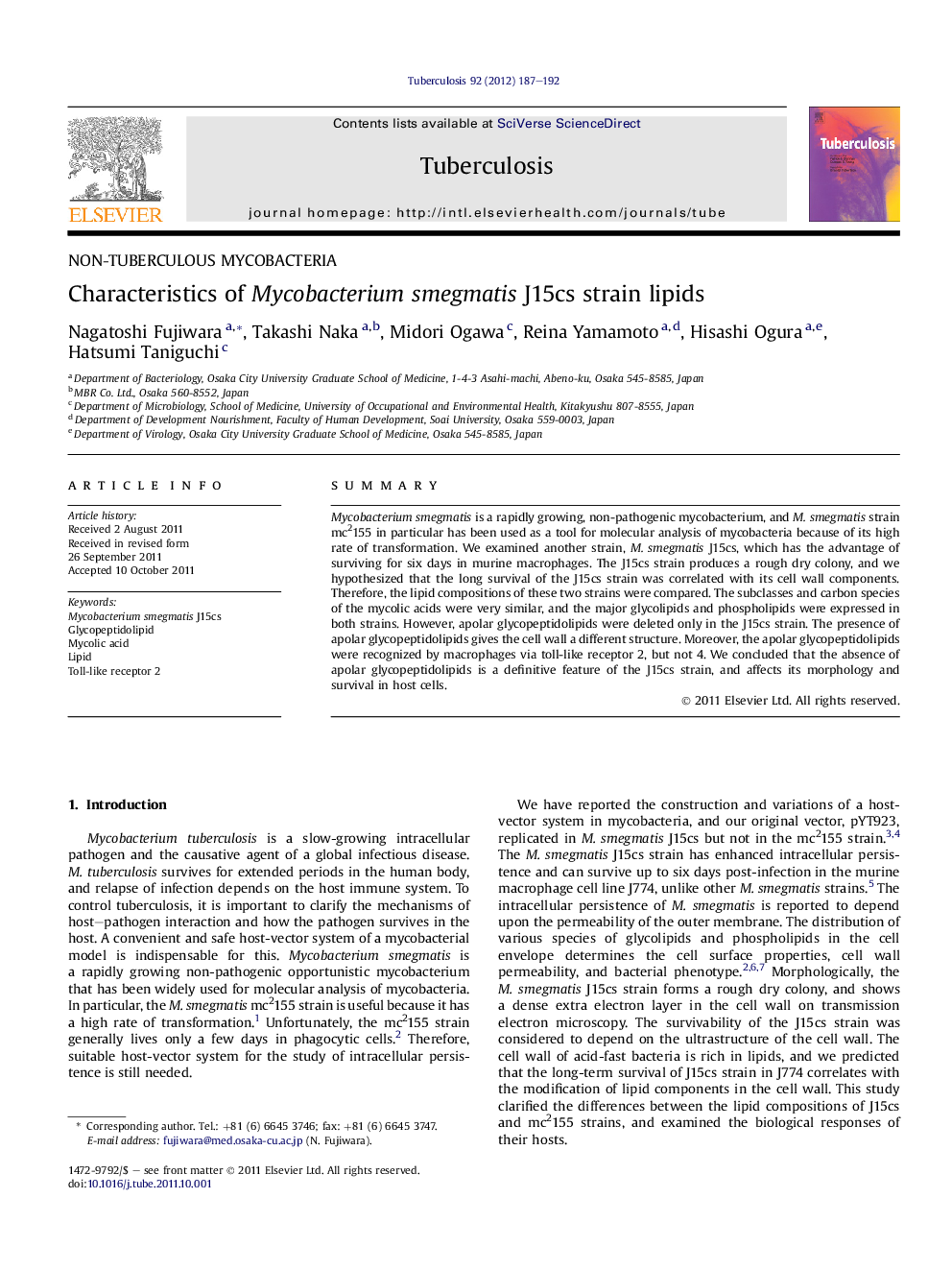| Article ID | Journal | Published Year | Pages | File Type |
|---|---|---|---|---|
| 10962216 | Tuberculosis | 2012 | 6 Pages |
Abstract
Mycobacterium smegmatis is a rapidly growing, non-pathogenic mycobacterium, and M. smegmatis strain mc2155 in particular has been used as a tool for molecular analysis of mycobacteria because of its high rate of transformation. We examined another strain, M. smegmatis J15cs, which has the advantage of surviving for six days in murine macrophages. The J15cs strain produces a rough dry colony, and we hypothesized that the long survival of the J15cs strain was correlated with its cell wall components. Therefore, the lipid compositions of these two strains were compared. The subclasses and carbon species of the mycolic acids were very similar, and the major glycolipids and phospholipids were expressed in both strains. However, apolar glycopeptidolipids were deleted only in the J15cs strain. The presence of apolar glycopeptidolipids gives the cell wall a different structure. Moreover, the apolar glycopeptidolipids were recognized by macrophages via toll-like receptor 2, but not 4. We concluded that the absence of apolar glycopeptidolipids is a definitive feature of the J15cs strain, and affects its morphology and survival in host cells.
Related Topics
Life Sciences
Immunology and Microbiology
Applied Microbiology and Biotechnology
Authors
Nagatoshi Fujiwara, Takashi Naka, Midori Ogawa, Reina Yamamoto, Hisashi Ogura, Hatsumi Taniguchi,
